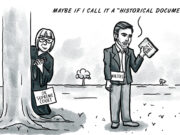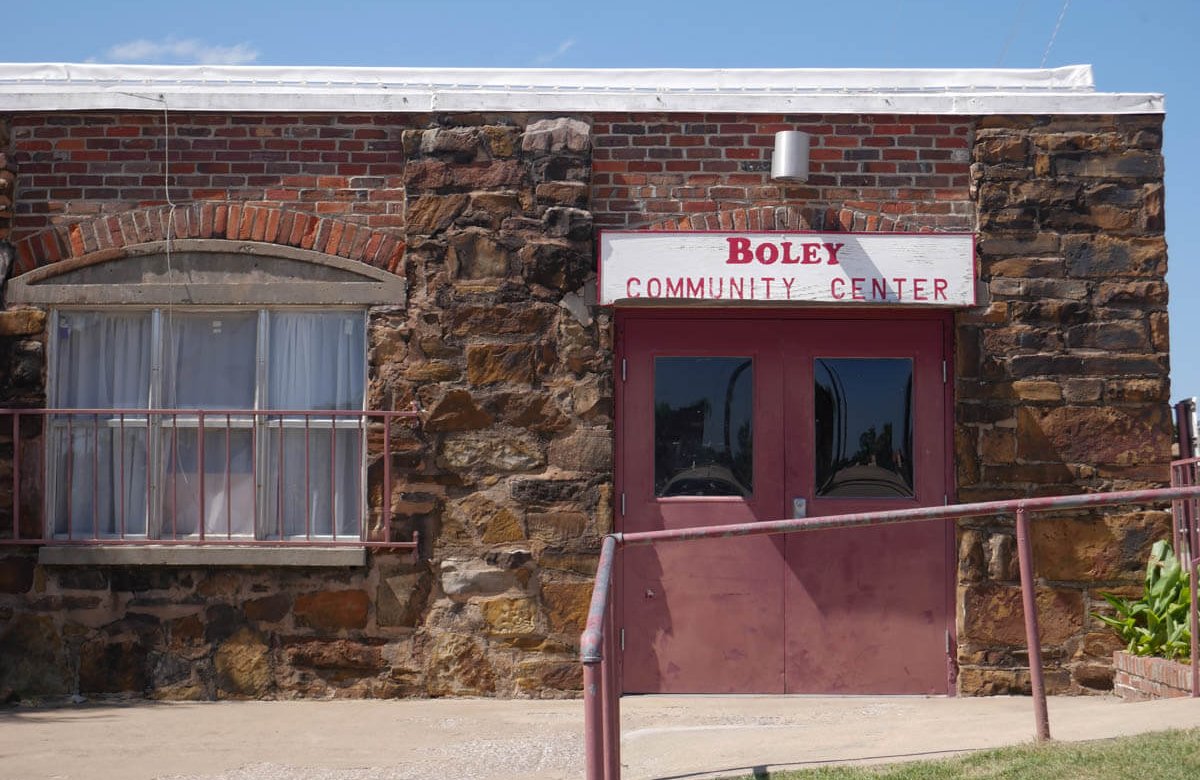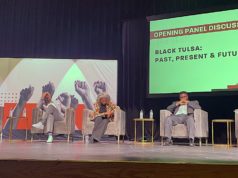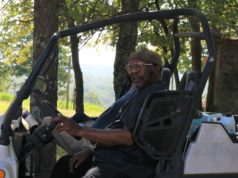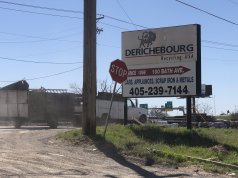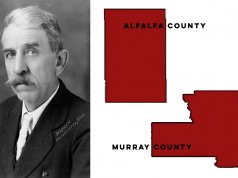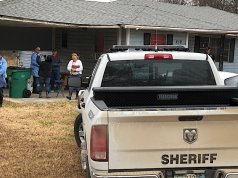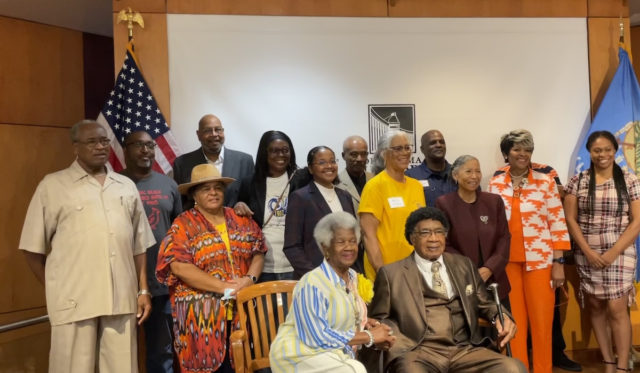
Opal Lee, a 95-year-old known as the “grandmother of Juneteenth,” had a simple message for attendees of the first annual All-Black Towns State Conference: “We aren’t free yet.”
Of the few hundred people who attended the Oklahoma Historical Society Research Center for the conference on Aug. 20, only about two dozen remained when Lee spoke. But those who were still there listened intently as Lee, who gained fame for her decades-long effort to make Juneteenth a federal holiday, talked about the importance of preserving Black history, particularly the history of racial oppression in the United States.
“We got schools taking out materials and not teaching what actually happened. You can’t erase history. You cannot erase it,” Lee said. “It’s your responsibility to see that [children] know, and they can make the decision that it will never happen again. I’m on my arthritic knees: Please don’t let it happen again.”
Her address capped a conference created both to raise awareness for Oklahoma’s historic all-Black towns, and to provide the leaders of those towns with more information on government programs they can take advantage of to help their communities.
Oklahoma’s all-Black towns were founded in the late 19th and early 20th centuries. Most were established by Freedmen who had previously been enslaved by the tribal nations relocated to the region during the Trail of Tears. Others, like Langston, were founded in the wake of the 1889 Land Run by Black settlers hoping to create communities free from the racial oppression they faced elsewhere.
By 1920, there were more than 50 recognized all-Black towns in Oklahoma. They relied largely on agriculture as their chief revenue generator. As the state passed Jim Crow laws and crop prices plummeted after World War I, many residents left the communities. Over time, most of the towns lost their incorporated status, and only 13 of the original towns remain today.
The Oklahoma Conference of Black Mayors organized the Aug. 20 gathering. During the first half of the day, mayors and councilpersons from 11 of the 13 historic all-Black towns — Boley, Brooksville, Clearview, Grayson, Langston, Lima, Redbird, Rentiesville, Taft, Tatums and Tullahassee — each spoke for 15 minutes. IXL, which became the 14th active all-Black town after its incorporation in 2001, was represented by Mayor Joan Partridge. Mayors from Arcadia and Ft. Coffee, which are not counted among the historically all-Black towns but have a majority Black population, also spoke.
The community leaders talked about what makes their towns unique, whether it be historical churches or rodeos, and why people should come to visit. Mildred Burkhalter, the mayor of Rentiesville, promoted the town’s annual Dusk ‘til Dawn Blues Festival. Held every Labor Day weekend, the festival is hosted by the town’s Down Home Blues Club, which dates back to the 1930s and is now owned by Selby Minner, a musician and the widow of famed guitarist D.C. Minner.
“It’s a peaceful place to live,” Burkhalter said after her presentation. “Every night, you can go out on your porch, watch the sunset, and listen to the blues coming from the club down the street.”
But the presenters also did not shy away from addressing the troubles their communities have faced.
Some, like Mayor Darryl Moore of Redbird, talked about the town’s early history. Redbird took in refugees after the 1921 Tulsa Race Massacre, and the town nearly disappeared after subsequent attacks from the Ku Klux Klan and falling crop prices during the Great Depression.
“You can tell within those 13 towns there is such a tenacity to just survive,” Michael Boyles, the mayor of Langston, said during his presentation. “They’ve done whatever they could to make things work for them.”
But many want to move beyond “just survival.”
Francis Shelton, the mayor of Boley, said it’s time that her town “looks like what we feel like: absolutely beautiful.”
Follow @NonDocMedia on:
Government agencies promote programs
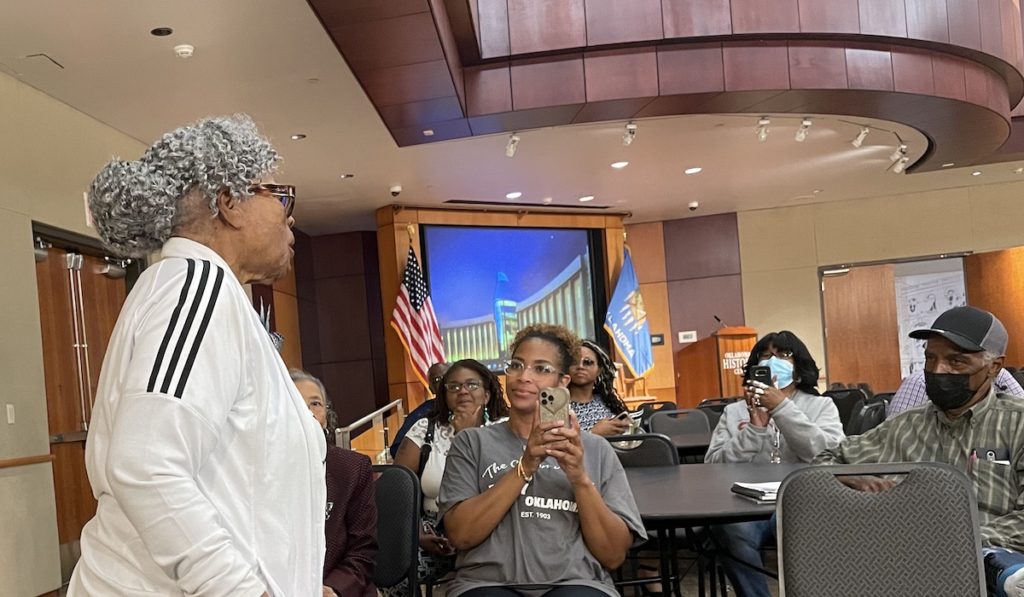
Of the 13 remaining all-Black towns, only Langston, Boley and Ft. Coffee currently have a population of more than 200 people. All of the towns need infrastructure improvements, and many have no sewer systems, so residents have to rely on personal septic tanks. Many also struggle to sustain local businesses, and prospective residents have limited housing options.
The second half of the Aug. 20 conference was devoted to introducing state programs that might benefit the towns. State Sen. Roger Thompson (R-Okemah) spoke about the work the Oklahoma Legislature is doing to support all-Black towns.
Thompson, who is the chairman of the Senate Appropriations Committee and the co-chairman of the Joint Committee on Pandemic Relief Funding, provided an update on requests for American Rescue plan funds, saying working groups have been formed to review requests from rural communities. He said the Legislature is separately working on a plan to set aside money for historically Black towns to improve their water infrastructure.
“We’re not here, as the State of Oklahoma, to carry the weight of local communities,” Thompson said. “We’re here to partner with the local communities, because when the local communities put sweat and blood and dollars into it, it normally works.”
Representatives from the Department of Environmental Quality, the Oklahoma Water Resources Board and the Oklahoma Housing Finance Agency discussed appraisals and grants that are available to the towns, and the state’s Departments of Agriculture, Commerce and Transportation presented different strategies that towns might use to promote tourism and market development in their communities.
RELATED
Oklahoma’s historic all-Black towns: Built on hope, survived by pride by Archiebald Browne
Former Sen. Kenneth Corn, who was named the USDA state director for rural development in Oklahoma earlier this year, said this is a “historic time in regards to the money that is available for communities,” especially with the recently-passed bipartisan infrastructure bill and the Inflation Reduction Act.
“When I took this job back in March, the president was very clear about the need for us to make investments in rural communities,” Corn said. “Not only in rural communities, but in communities that have been historically underserved.”
Corn acknowledged that the amount of money available can seem overwhelming, especially for people who don’t have a background in grant writing, but he said his office is available to help leaders as long as they take the initiative to start filing paperwork.
“The money’s there. It’s available,” Corn said. “The question is whether we’re going to be prepared to get this money in our hands and put it to use to make some real generational change for the communities in which we live.”
Mayor Shelton, of Boley, said the presentations from the government offices gave her a lot of useful information on ways to improve her town.
“It’s been a great day. It’s so helpful to have all of these resources in one place,” she said. “If you’re down, it gives you hope.”







